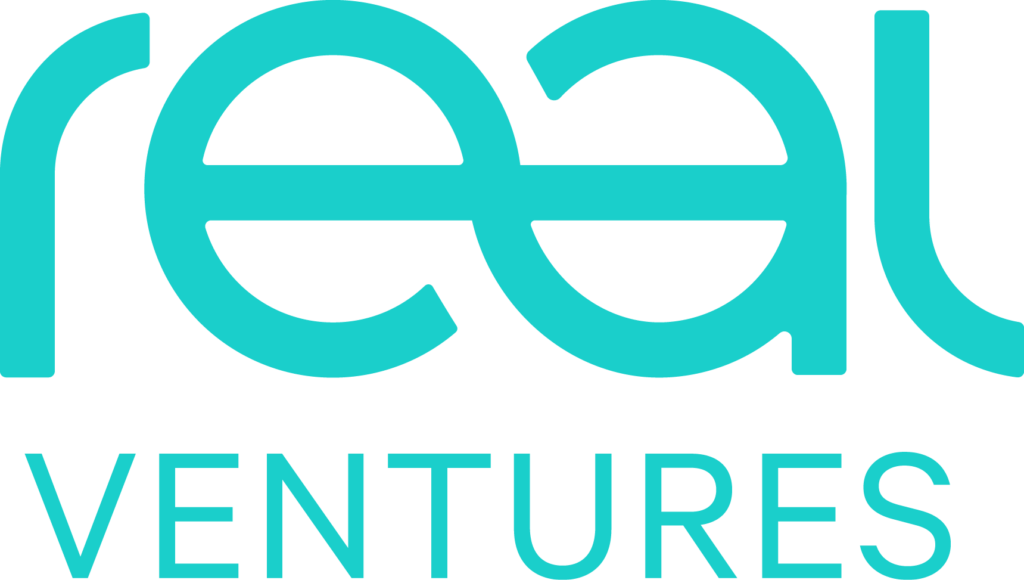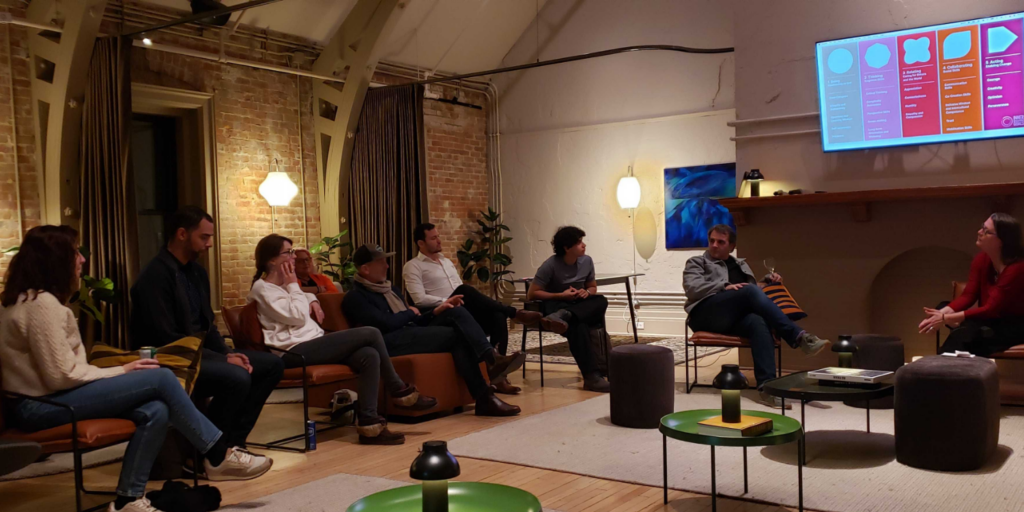This is the second post of a series aimed to provide a cohesive perspective on all aspects of Canada’s AI ecosystems — from their roots to the objectives, partnerships and impact of key ecosystem players. Our first article focused on how Montreal’s non-predatory model helped establish the city as a world-class AI research community. In this article, we focus on how Ontario’s network of public-private institutes are facilitating scaled, advanced AI research and commercialization within and beyond the province.
More than 8,000 articles on artificial intelligence in Toronto have been published so far in 2018—a number that indicates consistent and newsworthy investment in the ecosystem. In fact, all of Ontario’s AI ecosystems are seeing major growth, and this is no accident. The province of Ontario is focusing on AI for economic development and it’s bearing significant fruit. Toronto and Waterloo are now home to more than 275 AI startups, a growing number of which have raised substantial funding from international VCs. Toronto’s tech-related job growth is now faster than that of San Francisco, Seattle and D.C. combined. And given the opportunities to work alongside some of the most talented researchers in world, it’s now one of the best places globally to launch a career in artificial intelligence.
Initially, these opportunities for AI talent were shaped by the loyalty of a few pioneers and experts. Now, they’re being driven by:
- Government investment to keep talented AI researchers in Ontario
- Institutes that drive opportunities for and access to world-class AI talent; and,
- Infrastructure and policies that support innovation
Multinationals buddy-up to Canada’s talent
The major influx of multinationals to Ontario in the past two years isn’t due to the exchange rate. It’s because of (1) hunger for AI talent, and (2) the requirement by Pan-Canadian AI research institutes for multinationals to set up R&D labs in Canada in order to gain access to this burgeoning talent.
Multinationals are not only building research labs, they’re also funding development of talent, carving out research niches and recruiting experts in the field to attract new graduates. RBC, Google, Uber, Nvidia, and Samsung are among the many companies that have made physical and financial commitments to strengthening the Canadian talent pool:

The talent and infrastructure that have lured the Googles of the world to Ontario are also partly the result of government investment in a knowledge economy. In this year’s budget alone, Ontario allocated $350 million to push the development of key transformative technologies (AI, 5G, autonomous vehicles, advanced computing, quantum technologies) to build a broader foundation of sustainable innovation and commercialization in Ontario and Canada. The view that AI is key to long-term economic development drives federal and provincial government support of initiatives that increase opportunities for talent development and retention. In Ontario, top-down, strategic investment in researcher-centric institutes has signalled internationally that Canada is invested in the AI future, and in creating unique opportunities for new graduates.
Institutes harness interest as opportunity
There are three physical representations of ecosystem-wide support for AI in Ontario. These institutes merge public research interests and corporate commercialization objectives (and capital) by focusing on the one common interest: talent. They attract, develop and retain local and international talent by offering flexible opportunities to apply AI skill sets across top universities, research institutes and corporations. More importantly they provide both talent and industry access to a network of world-class researchers in the field and opportunities to collaborate with them.
The oldest of the three institutes, the Canadian Institute for Advanced Research (CIFAR), creates and maintains research networks that bridge knowledge gaps globally, and support innovative pioneers like Geoffrey Hinton.

In 1982, CIFAR was established as a “university without walls”, where researchers were encouraged to share their best ideas rather than guard them. With the support of global partners and sponsors, CIFAR now provides modest financing and a framework for collaboration to over four hundred scholars and advisors, in sixteen countries and across twelve research programs. Roughly 40 researchers belong to CIFAR’s Learning in Machines & Brains program which was founded in 2004 and has produced a stream of the most-cited research in AI.
CIFAR also leads the Government of Canada’s Pan-Canadian Strategy in Artificial Intelligence, which establishes three AI institutes dedicated to providing a critical mass of research and innovation. The strategy also supports the AI & Society program to examine the ethical, legal, economic and policy issues related to AI.
Ontario’s second major institute, the Vector Institute for artificial intelligence, acts as a magnet to attract and retain the talent needed to advance research and accelerate commercialization and applications of AI across Canada.

The Vector Institute is dedicated to advancing the field of artificial intelligence through research and applications in the areas of deep learning and machine learning. It was launched in 2017 with funding commitments of $135 million over its first five years from the governments of Canada and Ontario and more than 30 companies (Canadian or International with an AI research presence in Canada) seeking to advance AI in Canada. Vector offers a middle ground where AI experts can pursue academic research and work on specific applications with industry, start-ups, or even health care. For the 20+ researchers who work at the institute and their graduate students, this flexibility — and more importantly, the opportunity to be down the hall from other top researchers in their field — is enough to move to Toronto, or stay in town.
The Vector Institute aims to drive an increase in the number of graduate students working in AI-related fields. This helps reinforce the Government of Ontario’s pledge, in Oct 2017, to increase the number of annual STEM grads from 40,000 to over 50,000, by 2023.
The third major institute in Ontario, the Waterloo Artificial Intelligence Institute (Waterloo.ai) acts as a portal for organizations to access researcher expertise for commercial applications of AI.
Its launch in March 2018 formalized relationships across eight of the university’s research centres and 24 of its research labs, bringing together almost 100 faculty members to innovate around business, government, and non-profit problems. UWaterloo’s leading AI centre exposes students and researchers to the most recent software and hardware available in Pattern Analysis and Machine Intelligence (PAMI), building a concentration of STEM talent and graduates extremely desirable to academic institutions and industrial companies. As well as collaborating with five institutes that share its mission (incl. Vector Institute, MILA in Montreal, and AMII in Alberta), Waterloo also has close ties to industry for researcher collaboration.
Waterloo’s Centre for Pattern Analysis and Machine Intelligence (CPAMI) is particularly noteworthy, with six renowned researchers and faculty members, who have produced more than fifty patents and five spin-off companies.
These institutes, backed by governments, corporations, and individuals, drive significant local and foreign investment in Ontario. For CIFAR, the Vector Institute, and Waterloo.ai, a focus on talent is turning overwhelming demand for graduates into financing and research opportunities. While the University of Waterloo and Univerity of Toronto have consistently generated strong graduates in AI-related fields, it wasn’t until the loyalty of home-grown experts planted the seeds for these institutes, and competitive opportunities for talent became a reason for graduates to stay — and for Canadian companies like ROSS Intelligence to return from the US.
Universities germinate strong talent to fill the gap
The AI revolution we’re seeing today was spawned in large part in Canadian universities. In Ontario, The University of Toronto (home of Geoffrey Hinton) and University of Waterloo are among the top computer science programs globally, and they continue to spin out a growing number of graduates in AI-related fields.
In 2012, a team from the University of Toronto (U of T) — Alex Krizhevsky and Ilya Sutskever, supervised by Geoffrey Hinton — jump-stepped the course of machine vision with their submission of the SuperVision algorithm to the prestigious ImageNet Challenge. Krizhevsky (now the Technical Advisor to Dessa), Sutskever (Co-Founder and Director of Open AI), and Russ Salakhutdinov (AI Director at Apple) went on to adapt their findings for applications in Silicon Valley — into products and services that we now interact with daily.
While many graduates left Canada in the early 2010s in search of corporate opportunities, top researchers, including U of T’s AI veterans, Geoffrey Hinton and Yann LeCun, stayed:
- Geoffrey Hinton, a professor emeritus at the University of Toronto since 2001, is a part-time collaborator with Google’s Toronto office, chief scientific advisor at the Vector Institute, and is responsible for one of the Vector Institute’s first projects: connecting neural networks to the huge pools of data available at Toronto hospitals. Geoffrey Hinton also set up a CIFAR group in 2003 dedicated to neural networks, a program now called Learning in Machines and Brains.
- Yann LeCun, another AI veteran, did his post-doc at the University of Toronto in 1987, and works closely with Yoshua Bengio as Co-Director of CIFAR’s Learning in Machines and Brains program. LeCun’s career milestones include founding Facebook’s AI research lab (FAIR) in Montreal in 2013, and his recent transition from Head of AI Research at Facebook to Chief AI Scientist.
Hinton and LeCun were not only instrumental catalysts for increased research opportunities within universities, but are also at the center of institutes that help reverse the brain drain. Without the buy-in of the surrounding ecosystem to finance, partner and work with institutes like CIFAR, the Vector Institute, and Waterloo.ai, there wouldn’t be so many eyes and ears focused north of the border. These institutes sit in and among Ontario’s flexible innovation infrastructure and dense startup community — ready to innovate around the latest developments in AI.
Innovation infrastructure buds new applications of AI
Most investors and founders would agree that it takes an ecosystem to build a startup. In partnership with Ontario’s industry, universities, colleges, research hospitals, investors and governments, the province has a network of Innovation Centres that facilitate 30+ programs and partnerships to facilitate commercialization of innovation and global competitiveness. These seventeen centres, known as the Ontario Centres of Excellence (OCE), have operated as a coordinated collective since 2010. Two centres at the heart of Ontario’s major AI hubs are Toronto’s MaRS Center and Waterloo’s Communitech:
The MaRS Discovery District is home to dozens of AI organizations including the Vector Institute, CIFAR, Borealis AI, Uber’s Advanced Technology Group, Element AI, and Deep Genomics. Since opening in 2005, it has provided entrepreneurs with skills via its venture services, and includes a network of 1,000 high-potential growth startups that have collectively generated more than $1.3 billion in revenue from 2008–2015. The hub continues to expand programming and recently announced a partnership with the provincial government, Communitech and Invest Ottawa to deliver the Ontario Scale-up Vouchers Program.
Communitech is an innovation hub that supports a community of more than 1,400 companies — from startups to scale-ups to large global players. Since its launch in May 1997, the innovation hub estimates the economic impact of its members on the region to be over $1.7 billion. To help expand its support to more startups and high-growth companies, the Government of Ontario invested $1.2 million (as of 2016) and opened a new branch in the heart of Waterloo’s data district (as of 2017): The Communitech Data Hub, dedicated to advancing Artificial Intelligence, Connected Vehicles, Cyber Security and Smart Cities.
Ontario’s support for innovation extends beyond infrastructure and financing. The province recently implemented the Startup Visa Program to fast-track immigration of highly skilled workers to within ten business days; enabling companies like Canvass and Integrate.ai to hire within weeks, not months. Provincial support for AI development and innovation is backed by policy, money, and infrastructure — which combined, reduce friction for talent and provide a critical advantage as Ontario startups hustle to integrate developments in AI and meet ambitious goals for growth.
Just like its talent, Toronto startups are drawing major attention from investors — both Canadian and international. This year, BenchSci raised 8M USD, including an investment from Alphabet’s AI fund (the funds’ first investment outside the US), Swift Medical raised $11.6M Series A led by Data Collective, and Integrate.ai raised a total of 9.6M USD, including a 5M seed round from Georgian Partners (the funds’ only early stage investment to date). It is this systematic approach to backing opportunities for talent, attracting and retaining foreign investment, and supporting the larger innovation community that makes Ontario’s innovation hubs thriving ones.
Like Montreal’s ecosystem, Ontario’s nature of fellowship within universities and research institutes has led to disruptive breakthroughs in technology. It has also shaped clear paths of communication between top research institutes, whereby experts not only sit down the hall from one another, but practice knowledge sharing across institutes with the common objective of advancing AI research and applications. Ontario is distinct from Montreal (and Québec), however, in the province’s historic financial and regulatory support for innovation. This has not only financed physical infrastructure and programs for talent development and innovation, but is also a quintessential show of the province’s steadfast commitment to AI — with the result of snowballing global and ecosystem-wide support. By creating strong communication links between research, innovation, and commercialization, within and beyond the province, Ontario has not only generated more opportunities for talent, but has also harnessed local and foreign investment to fuel the communication and collaboration necessary to expand global applications of AI.
**********
For more on our thoughts about how to scale your startup, sign up for our newsletter and follow us on Twitter , LinkedIn, and Facebook.




